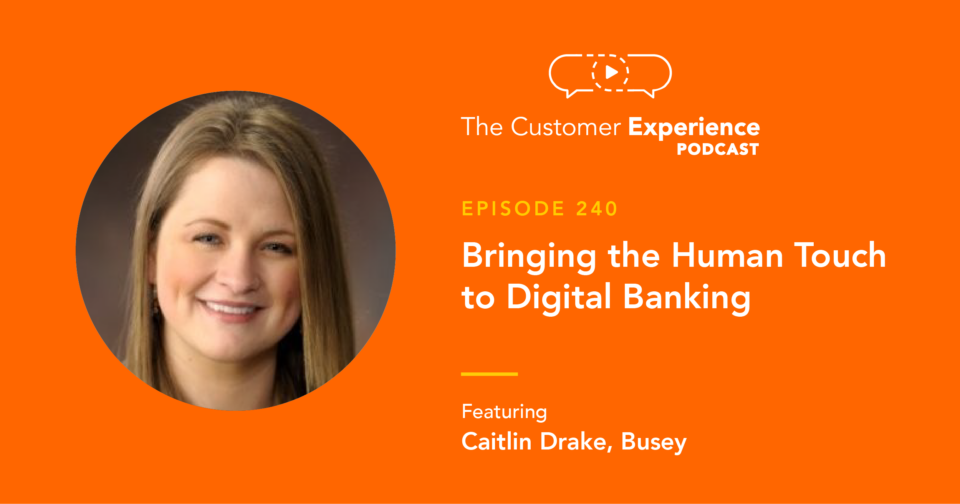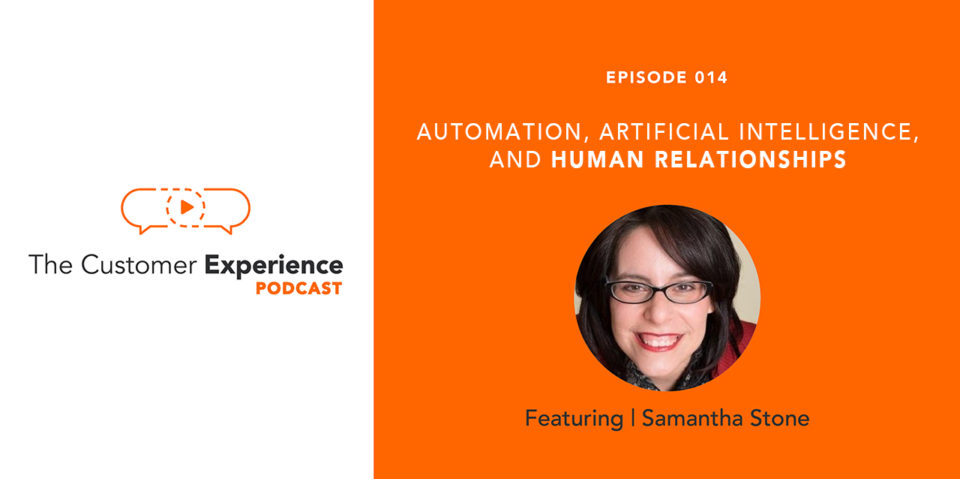
If you think a checked box or a 1-10 rating on a survey is the only way to measure customer satisfaction, you’re in trouble. Customers give us feedback in all kinds of ways. And there are other metrics.
So says Samantha Stone, the founder and CMO of the Marketing Advisory Network. She’s the author of Unleash Possible: A Marketing Playbook That Drives Sales, and a regular conference speaker. As a consequence of working for years in marketing, product marketing, partner marketing, and beyond, Samantha brings a great wealth of expertise to The Customer Experience Podcast.
We talk humans, machines, trust, relationships, and much more in a fun and valuable conversation. Enjoy …
Balancing Automation, Artificial Intelligence, and Human Relationships
To hear this episode and others like it, subscribe to The Customer Experience Podcast in Apple Podcasts.
You can also listen in Spotify, Google Podcasts, or Stitcher.
And, of course, I also embed each episode into its companion blog posts like this one.
Hear the entire conversation with marketing expert Samantha Stone right here …
Listen to “14. Automation, AI, and Human Relationships with Samantha Stone” on Spreaker.
The Two Types of Customer Experience
Customer experience is built from every interaction between companies and brands and their prospects and customers. It can involve placing an order or taking receipt of a delivered item. It could be a direct conversation or an event one attended.
But there’s another definition inside many organizations. Because these interactions happen in so many different places, a company may create a function that is responsible for the intersection of all the different customer touch points.
Without this practical and functional approach to CX, we often deliver inconsistent interactions. Sales operates differently than marketing, which operates differently than support, which operates differently than order fulfillment, etc.
In this video clip, Samantha talks through the importance of consistency in customer experience …
The organizations in which this is most successful and impactful is where there’s executive-level buy-in. It’s not successful when it’s a symbolic gesture, but it can be very effective when you actually treat customer experience like a core function to the business.
Quantifying the Customer Experience
Businesses have become too dependent on metrics like customer satisfaction or Net Promoter Score. These are important indicators and can often be valuable, but they also can be misleading.
In this video clip, Samantha talks about the metrics that matter most …
The ultimate measure is customer lifetime value. Are we delivering to our customers in ways that enhance the relationship, make them come back for more, increase what they spend with us both in terms of their time and money?
That’s the ultimate metric.
There’s also a softer measure – customer advocacy.
- Do you have references?
- Do you get quoted in stories?
- Do customers mention you to their friends?
- Do you get referrals into your sales centers that come from somewhere else?
- Do you see people talking about you in positive ways on social media?
- When you go to events, is there buzz around you?
That advocacy is harder to measure in specific ways, but you know when you’re trending up and you know when you’re not. That’s as important as the lifetime customer metric and certainly more valuable than an NPS score.
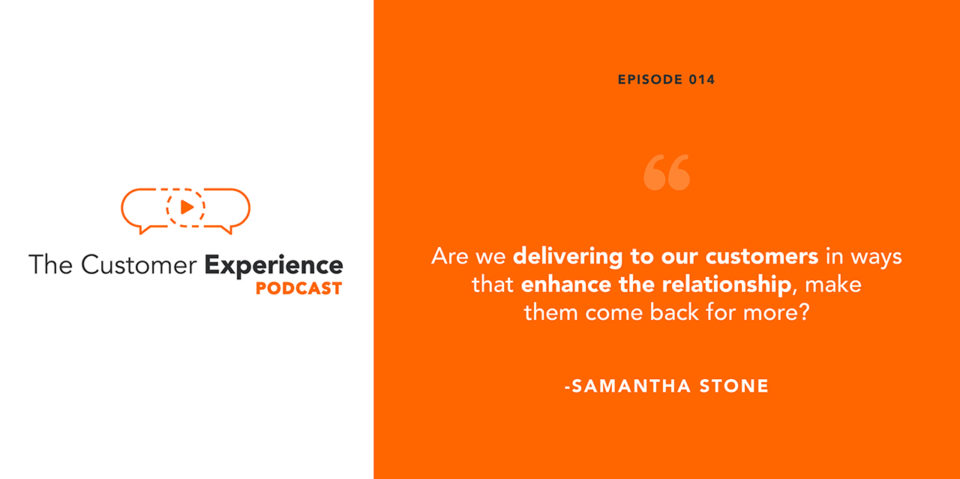
The Marketing Advisory Network
The Marketing Advisory Network works with businesses that have complex products and services. Often they are B2Bs.
They specialize in helping organizations think through the customer journey, their sales and marketing alignment, strategy, product launches, and all sorts of complex things that help grow businesses.
There is a research component of the business, a content strategy and development portion, and a real sales and marketing demand generation component. Stone loves it because she gets to touch a lot of different businesses and see a lot of examples of things that are working and not working in wildly divergent arenas.
That gives Stone and her team exposure to different types of customer service and customer engagements, and it allows them to take the best of what they see and apply it where it makes sense in another place.
Typically the kinds of decisions Stone’s team helps with are ones where they help sell something hard to explain or that has multiple value propositions to different people. They help make sense of all of that and figuring out how all of the pieces fit together.
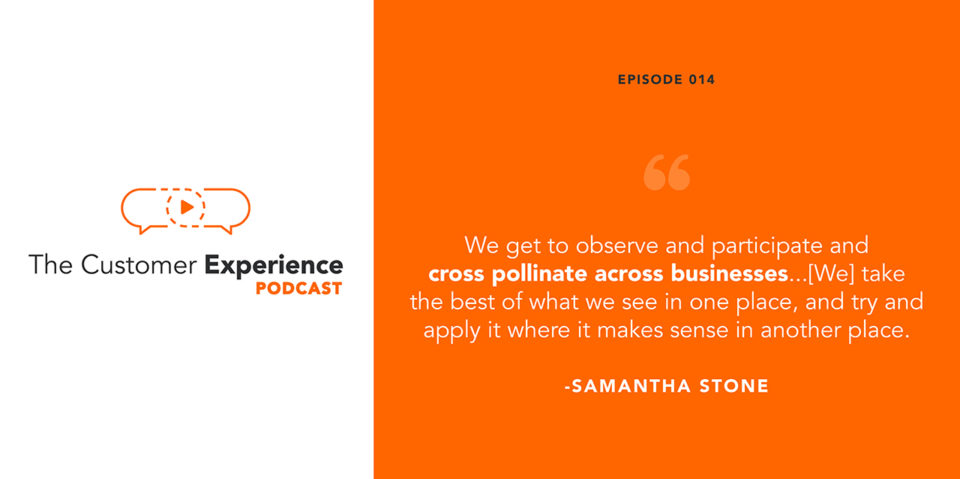
AI in Marketing
Like a lot of marketing executives, Stone is enthusiastic about artificial intelligence, with some reservations. She wants to make sure that business leaders and marketers don’t repeat the mistakes they made with marketing automation. The consequences of doing so could be dramatic.
Artificial intelligence has the opportunity to improve things like standard inquiries, but it also could widen the current consumer trust divide. AI is not designed nor should it be used to replace humans. Rather, it should enhance relationships.
Stone points out that if you simply want to know when your contract expires, or find a phone number, or register for a web seminar, none of that requires a human. But there are other instances where talking to a machine is a non-starter. If you’re in the middle of a crisis, no matter how simple it is to resolve, you need to talk to a person.
Stone sees AI maximizing its effectiveness in customer satisfaction in a hybrid manner.
AI can help CSRs on a call interact more effectively. The customer is not talking to a machine, they’re still talking to a human, but the information from the AI is making the human conversation better.
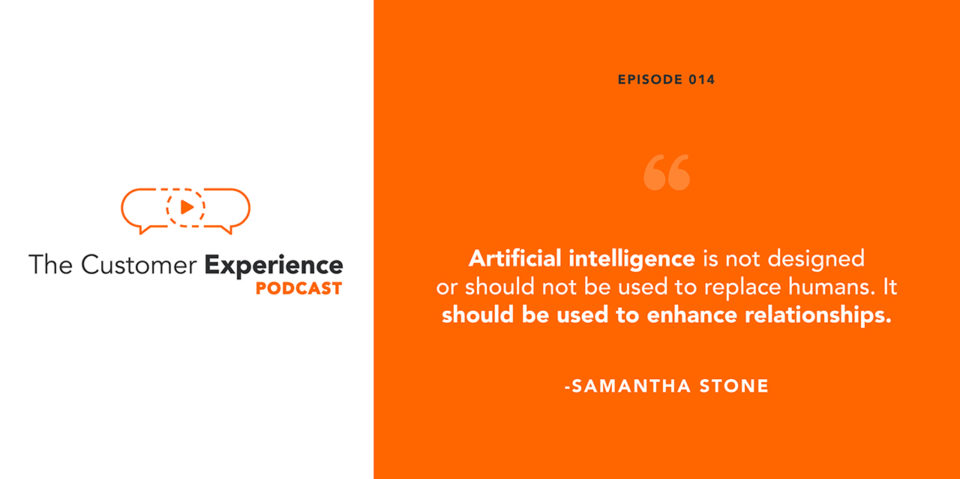
The Perils of Automation in Marketing
It is tempting to pretend that the chatbot with a photo and a name is a person. Or to create an email blast that pretends to come from a person.
These seemingly benign deceptions are dangerous and disruptive to building trust with customers. Stone believes businesses have to be incredibly transparent about where and when they’re using AI. They need to use good judgment and it’s the job of marketers to enforce that within organizations.
Here, Samantha talks through marketing automation mistakes she’s seen far too often even though we all know better …
Despite the ability to segment people in very specific and detailed ways, marketers still largely send the same communication to large groups of people. Technology makes it easy to do that. This ease of use discourages discipline about sending a specific message to the person who’s going to care at this moment and in this context.
Enterprise has not done a good job of using marketing automation to integrate knowledge about someone from across all the touch points. The conversations a salesperson has are largely independent of the marketing communications which are very different from the chat discussions on message boards. Are you doing a good job of looking holistically at a buyer or an account, or are you treating that as a unique siloed thing?
Technology is amazing, but it needs people and process and thoughtfulness, hard sophisticated work. Because marketing automation has become so easy to use, we’ve used it in the easiest ways and we’ve shortchanged the potential that those systems offer.
Know Your Automation from Your AI
Automation is rules-based. You tell a system a bunch of rules and it executes against that. It could be a sophisticated set of rules, it could be a nested set of rules, it could be a lot of if/then comparisons, but you still have to tell the system rules to follow.
Artificial intelligence is not rules-based. It builds a system that learns and predicts and takes action independent of rules. You may and should apply some rules as parameters around systems to make sure they don’t embarrass or hurt someone in some unintentional way, or say something offensive.
In this video, Samantha explains where automation ends and artificial intelligence begins …
But the fundamental difference is that it learns and acts without you predetermining all the various scenarios that might exist.
Here, Samantha lays out 3 fundamental truths about humans, machines, trust, and relationships …
Unleash Possible
Stone’s book Unleash Possible was born out of three things.
Stone had several ideas that resulted from her years of hard work. Part of it was designed to inspire people, teach them how to do and think about things. Also, to force Stone into being really clear about how to approach and solve challenges.
The second thing was, Stone couldn’t help everyone who reached out to her. Sometimes they were too small to be able to afford her or the timing didn’t work out. She felt badly about saying, “Let’s have coffee,” without any follow-through. So Unleash Possible was a way to do that.
The third reason was to educate sales leaders and CEOs about marketing. An alarming number of them didn’t know how to manage their marketing departments in an effective way. Unleash Possible was about helping business leaders who wanted to maximize the impact of their marketing teams, and weren’t expert enough to know how to drive it.
Instead of marketing AI to the rescue, Stone’s book provides friendly help to the all-too-human beings who are both sides of customer experience, whose needs are so much more than can be contained in a survey checkbox.
Related: Click here to listen in to a solo episode I did for The B2B Growth Show on how and why to write a book for your customers and your business.
This post is based on an interview with Samantha Stone, the founder and CMO of the Marketing Advisory Network and the author of Unleash Possible: A Marketing Playbook That Drives Sales
To hear this episode, and many more like it, please subscribe to The Customer Experience Podcast.
Subscriptions, ratings, and reviews in Apple Podcasts are critical to a podcast’s success.
If you enjoyed this conversation and want to hear from upcoming guests, take a minute right now and …
1. Go to The Customer Experience Podcast in Apple Podcasts
2. Subscribe or
3. Give a rating or
4. Write a short review
Just a minute of your time really helps the podcast!
If you don’t use Apple Podcasts, you can listen to episodes on Spotify, Google Podcasts, or Stitcher.
More Great People on The Customer Experience Podcast
Coming Soon:
- 5-time founder and 2-time CEO David Cancel (Drift)
- Customer experience expert Joey Coleman (Never Lose a Customer Again)
- Marketing leader Brett Chester (Sitetracker)
- Sales leader Charles Green (Trusted Advisor)
- Customer success leader Jordan Olivero (Swimlane)
Listen Now:
- Marketing leader Ann Handley (Marketing Profs)
- Customer experience keynote speaker David Avrin (Visibility International)
- Sales and marketing pro Darin Dawson (BombBomb)
- Customer success manager Nick Hart (Outreach)
Questions or guest recommendations? Please email me: Ethan (at) BombBomb (dot) com
Use technology to build human connections and relationships.
Every day, you’re relying on faceless, digital communication to convey your most important and valuable messages. Plain, typed-out text doesn’t build rapport, doesn’t differentiate you, and doesn’t communicate nearly as well as if you just looked someone in the eye through the camera lens and spoke to him or her.
All it takes is a smartphone or webcam – and it’s easy to do once you know how to do it.
Amazon’s #1 bestseller in Business Sales, Business Communication, and Customer Relations is available right now for individual or bulk orders. See the video, read expert endorsements, and learn what awaits you inside the book by visiting BombBomb.com/Book.



